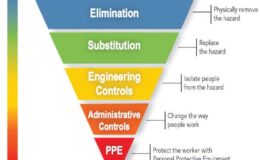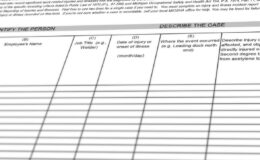December 31 conjures up a whole bunch of thoughts. One of the more boring, but required duties is for us to prepare our calendar year profit and loss statements, and get a start on the taxes for the year. You go through the cost of raw materials, the cost/depreciation of equipment, the building expenses, utilities, labor expenses, benefit costs, and in the end hopefully find a profit was yielded. MTM goes through a similar process, and this process is important for not only tax purposes, but to also determine MTM member dividends.
While we go through many of the same things as your shop, there are some differences. The parts that are the same are that we go through the office rent expense, office utility cost, office supply expense, mailing costs, printing, staff wages and staff benefits. All of that matches up pretty well with your shop’s process. In MTM’s case, all of those items only account for 12% to 14% of the MTM total expenses. By far, and not surprising, MTM’s largest expense is paying claims.
Some of the claims expense process is easy. As an example, a medical only claim comes in March, it was paid in April. We know the claim cost for the year. Similarly, an employee is injured in a shop accident in July, is off work for a month, and is back to work and all the bills of times lost and medical are paid in September, and again we know the cost for the year of that claim.
For many claims though, the cost is not easily determined at 12/31. Let me give you three examples.
- A medical only claim is received in November and we do not receive the bills from the medical provider until January.
- A medical only claim is processed in September, and in May of the next year the claim is reopened because of an injury aggravation.
- We receive a time loss claim that looks like it’s a four-week time loss time period, and at the end of four weeks we determine that the injury is more serious or that a second surgery is necessary, and the claim drags on longer, and invariably covers more than a single accounting period.
This brings up a little insurance jargon. Insurance managers call it Ib-Ner (IBNR) which stands for Incurred But Not Reported. It is a general category of claims expense used at the end of an insurance accounting period to determine what claims cost we have, but we just don’t know the exact cost yet. This category of claims expense is much more difficult to determine, and because the vast majority of general MTM expenses applies to claims cost, any variation of IBNR can change the calendar year MTM results.
Here’s how we manage IBNR. We look at past years and then what happened 3, 12, 24 months after that time period to plot out a record of how many claims were reported after 12/31 that occurred in December, how many claims that were medical only were converted, and claims values where we thought the claim was $10,000, and six months later determined it was a $50,000 claim (i.e. claims development). We won’t know the precise claims numbers for 2020 for one, two, or three years after the current year is over. So, our best estimates are to evaluate past years and test the results using different actuarial processes.
This is one of the more challenging parts of the insurance analysis/predictive modeling. In actuary school, the instructors will often start this section by saying developing IBNR factors is a lot like driving your car, but steering it by looking in the rearview mirror. It is a pretty accurate analysis. However if there are curves in the road (changing business/loss climate) or if there are hazards in the road (i.e. deer in the vicinity), then surprises can happen.
You have now completed lesson #1 of insurance accounting/actuarial work. Rather than bore you completely, I will leave this exciting topic and much more important I will have the 12/31 numbers for you in the next newsletter. Our 7th consecutive annual member dividend will be coming soon.
Until then, be safe.





